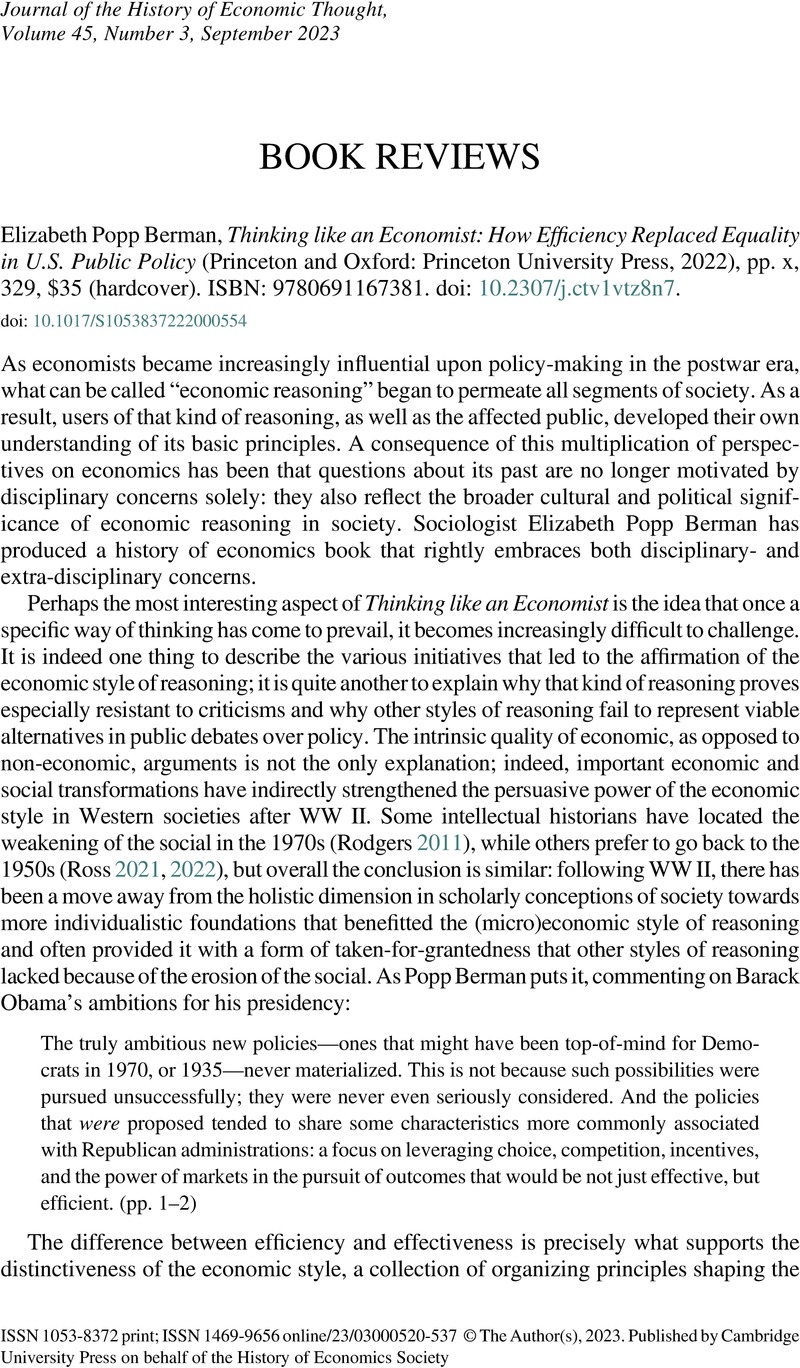No CrossRef data available.
Article contents
Elizabeth Popp Berman, Thinking like an Economist: How Efficiency Replaced Equality in U.S. Public Policy (Princeton and Oxford: Princeton University Press, 2022), pp. x, 329, $35 (hardcover). ISBN: 9780691167381. doi: 10.2307/j.ctv1vtz8n7.
Review products
Elizabeth Popp Berman, Thinking like an Economist: How Efficiency Replaced Equality in U.S. Public Policy (Princeton and Oxford: Princeton University Press, 2022), pp. x, 329, $35 (hardcover). ISBN: 9780691167381. doi: 10.2307/j.ctv1vtz8n7.
Published online by Cambridge University Press: 15 February 2023
Abstract
An abstract is not available for this content so a preview has been provided. Please use the Get access link above for information on how to access this content.

- Type
- Book Review
- Information
- Copyright
- © The Author(s), 2023. Published by Cambridge University Press on behalf of the History of Economics Society
References
REFERENCES
Mandler, Peter. 2019. “The Language of Social Science in Everyday Life.” History of the Human Sciences 32 (1): 66–82.CrossRefGoogle Scholar
Rodgers, Daniel. 2011. Age of Fracture. Cambridge, MA: Belknap Press of Harvard University Press.Google Scholar
Ross, Dorothy. 2021. “Whatever Happened to the Social in American Social Thought? Part 1.” Modern Intellectual History 18 (4): 1155–1177.CrossRefGoogle Scholar
Ross, Dorothy. 2022. “Whatever Happened to the Social in American Social Thought? Part 2.” Modern Intellectual History 19 (1): 268–296.CrossRefGoogle Scholar


